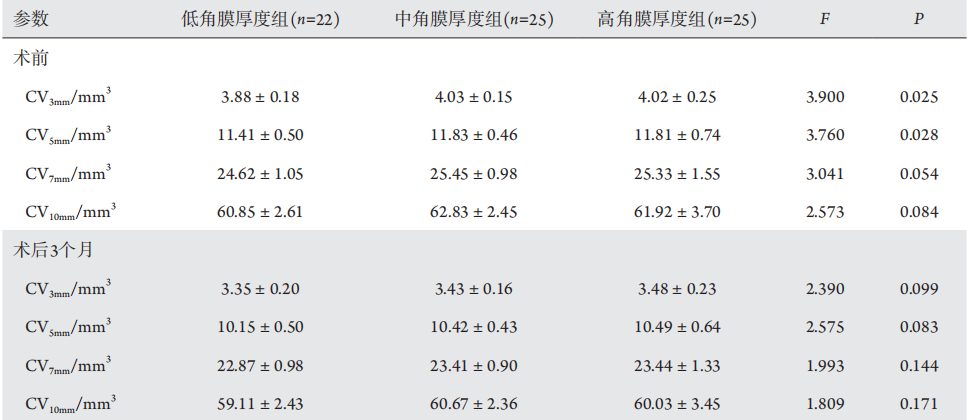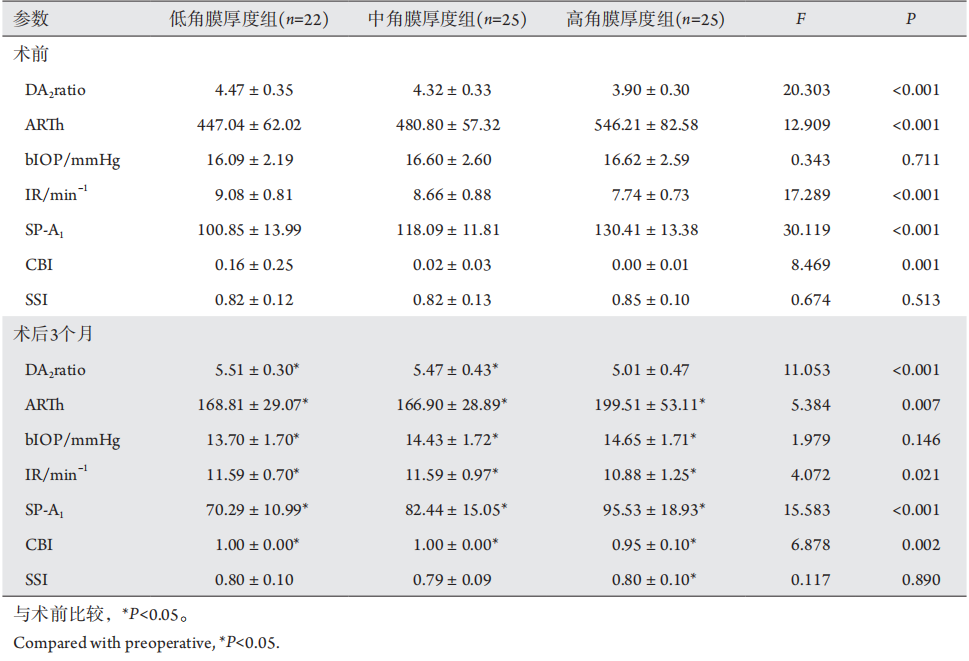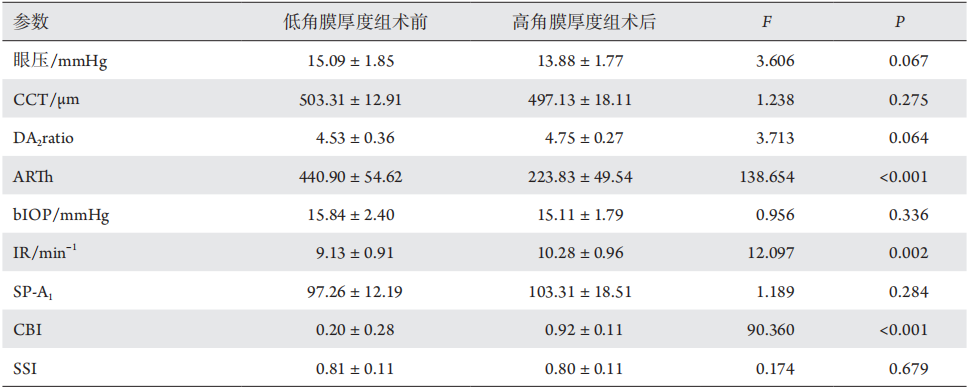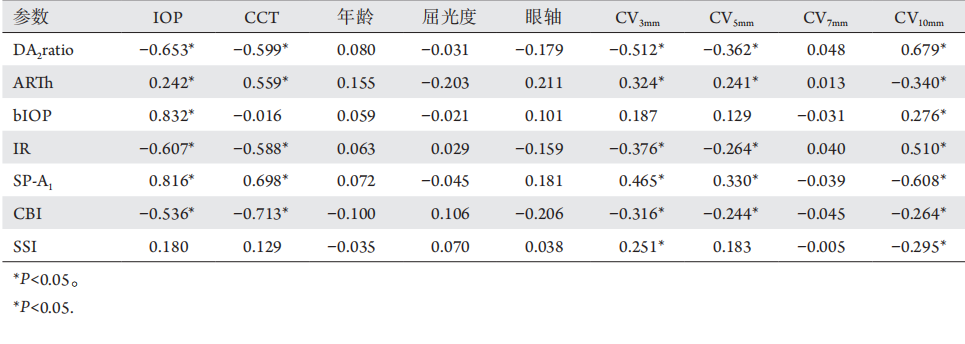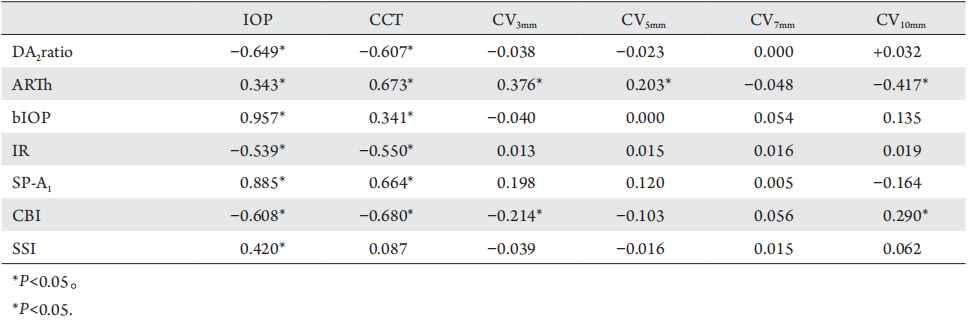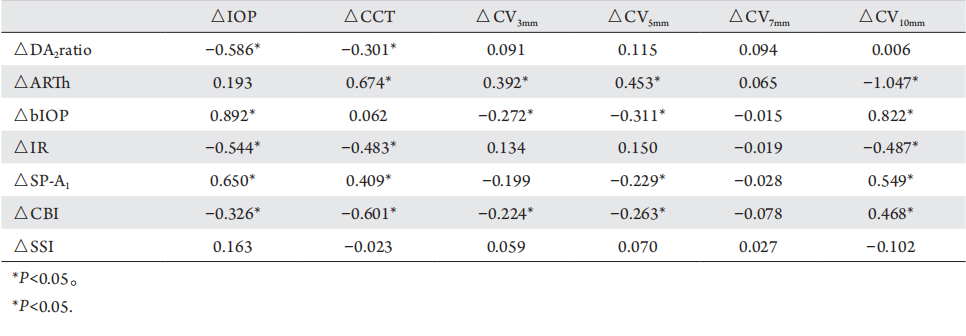1、Abd El-Fattah EA, El Dorghamy AA, Ghoneim AM, et al. Comparison of corneal biomechanical changes after LASIK and F-SMILE with CorVis ST[ J]. Eur J Ophthalmol, 2021, 31(4): 1762-1770.Abd El-Fattah EA, El Dorghamy AA, Ghoneim AM, et al. Comparison of corneal biomechanical changes after LASIK and F-SMILE with CorVis ST[ J]. Eur J Ophthalmol, 2021, 31(4): 1762-1770.
2、Schuh A, Kolb CM, Mayer WJ, et al. Comparison of changes in corneal volume and corneal thickness after myopia correction between LASIK and SMILE[ J]. PLoS One, 2021, 16(5): e0250700.Schuh A, Kolb CM, Mayer WJ, et al. Comparison of changes in corneal volume and corneal thickness after myopia correction between LASIK and SMILE[ J]. PLoS One, 2021, 16(5): e0250700.
3、Viswanathan D, Kumar NL, Males JJ, et al. Relationship of structural characteristics to biomechanical profile in normal, Keratoconic, and crosslinked eyes[ J]. Cornea, 2015, 34(7): 791-796.Viswanathan D, Kumar NL, Males JJ, et al. Relationship of structural characteristics to biomechanical profile in normal, Keratoconic, and crosslinked eyes[ J]. Cornea, 2015, 34(7): 791-796.
4、Esporcatte LPG, Salom?o MQ, Lopes BT, et al. Biomechanical diagnostics of the cornea[ J]. Eye Vis (Lond), 2020, 7: 9.Esporcatte LPG, Salom?o MQ, Lopes BT, et al. Biomechanical diagnostics of the cornea[ J]. Eye Vis (Lond), 2020, 7: 9.
5、Herber, R, Terai, N, Pillunat, KR, et al. Dynamic Scheimpflug Analyzer (Corvis ST) for measurement of corneal biomechanical parameters : A praxis-related overview[ J]. Ophthalmologe, 2018, 115(8): 635-643.Herber, R, Terai, N, Pillunat, KR, et al. Dynamic Scheimpflug Analyzer (Corvis ST) for measurement of corneal biomechanical parameters : A praxis-related overview[ J]. Ophthalmologe, 2018, 115(8): 635-643.
6、?evik SG, K?van? SA, Akova-Budak B, et al. Relationship among corneal biomechanics, anterior segment parameters, and geometric corneal parameters[ J]. J Ophthalmol, 2016, 2016: 8418613.?evik SG, K?van? SA, Akova-Budak B, et al. Relationship among corneal biomechanics, anterior segment parameters, and geometric corneal parameters[ J]. J Ophthalmol, 2016, 2016: 8418613.
7、Wei P, Cheng GP, Zhang J, et al. Changes in corneal volume at different areas and its correlation with corneal biomechanics after SMILE and FS-LASIK surgery[ J]. J Ophthalmol, 2020, 2020: 1713979.Wei P, Cheng GP, Zhang J, et al. Changes in corneal volume at different areas and its correlation with corneal biomechanics after SMILE and FS-LASIK surgery[ J]. J Ophthalmol, 2020, 2020: 1713979.
8、Diniz CM, Hazarbassanov RM, Yamazaki E, et al. Pentacam Scheimpflug evaluation of corneal volume after LASIK[ J]. J Refract
Surg, 2010, 26(8): 600-604.Diniz CM, Hazarbassanov RM, Yamazaki E, et al. Pentacam Scheimpflug evaluation of corneal volume after LASIK[ J]. J Refract
Surg, 2010, 26(8): 600-604.
9、Cer v i?o A , Gonzalez -Meijome JM, Ferrer-Blasco T, et al. Determination of corneal volume from anterior topography and
topographic pachymetry: application to healthy and keratoconic eyes[ J]. Ophthalmic Physiol Opt, 2009, 29(6): 652-660.Cer v i?o A , Gonzalez -Meijome JM, Ferrer-Blasco T, et al. Determination of corneal volume from anterior topography and
topographic pachymetry: application to healthy and keratoconic eyes[ J]. Ophthalmic Physiol Opt, 2009, 29(6): 652-660.
10、Sedaghat MR, Sharepoor M, Hassanzadeh S, et al. The corneal volume and biomechanical corneal factors: Is there any orrelation?[ J]. J Res Med Sci, 2012, 17(1): 32-39.Sedaghat MR, Sharepoor M, Hassanzadeh S, et al. The corneal volume and biomechanical corneal factors: Is there any orrelation?[ J]. J Res Med Sci, 2012, 17(1): 32-39.
11、Reinstein, DZ, Archer, TJ, Gobbe, M, et al. Lenticule thickness readout for small incision lenticule extraction compared to artemis three-dimensional very high-frequency digital ultrasound stromal measurements[ J]. J Refract Surg, 2014, 30(5): 304-309.Reinstein, DZ, Archer, TJ, Gobbe, M, et al. Lenticule thickness readout for small incision lenticule extraction compared to artemis three-dimensional very high-frequency digital ultrasound stromal measurements[ J]. J Refract Surg, 2014, 30(5): 304-309.
12、任胜卫, 杨凯丽, 徐丽妍. Corvis ST测量近视患者新型角膜生物力学参数的重复性及其影响因素[ J]. 中华实验眼科杂志, 2019,
37(12): 990-994.
REN Shengwei, YANG Kaili, XU Liyan. The reproducibility and influencing factors of corneal biomechanical parameters measured by Corvis ST in myopia[ J]. Chinese Journal of Experimental Ophthalmology, 2019, 37(12): 990-994.任胜卫, 杨凯丽, 徐丽妍. Corvis ST测量近视患者新型角膜生物力学参数的重复性及其影响因素[ J]. 中华实验眼科杂志, 2019,
37(12): 990-994.
REN Shengwei, YANG Kaili, XU Liyan. The reproducibility and influencing factors of corneal biomechanical parameters measured by Corvis ST in myopia[ J]. Chinese Journal of Experimental Ophthalmology, 2019, 37(12): 990-994.
13、Han, F, Li, M, Wei, P, et al. Effect of biomechanical properties on myopia: a study of new corneal biomechanical parameters[ J]. BMC Ophthalmol, 2020, 20(1): 459.Han, F, Li, M, Wei, P, et al. Effect of biomechanical properties on myopia: a study of new corneal biomechanical parameters[ J]. BMC Ophthalmol, 2020, 20(1): 459.
14、Sefat SM, Wiltfang R, Bechmann M, et al. Evaluation of changes in human corneas after femtosecond laser-assisted LASIK and small-incision lenticule extraction (SMILE) using Non-Contact Tonometry and Ultra-High-Speed Camera (Corvis ST)[J]. Curr Eye Res, 2016, 41(7): 917-922.Sefat SM, Wiltfang R, Bechmann M, et al. Evaluation of changes in human corneas after femtosecond laser-assisted LASIK and small-incision lenticule extraction (SMILE) using Non-Contact Tonometry and Ultra-High-Speed Camera (Corvis ST)[J]. Curr Eye Res, 2016, 41(7): 917-922.
15、Yu M, Chen M, Dai J. Comparison of the posterior corneal elevation and biomechanics after SMILE and LASEK for myopia: a short- and long-term observation[ J]. Graefes Arch Clin Exp Ophthalmol, 2019,257(3): 601-606.Yu M, Chen M, Dai J. Comparison of the posterior corneal elevation and biomechanics after SMILE and LASEK for myopia: a short- and long-term observation[ J]. Graefes Arch Clin Exp Ophthalmol, 2019,257(3): 601-606.
16、Spadea L, Giammaria D, Trabucco P. Corneal wound healing after laser vision correction[ J]. Br J Ophthalmol, 2016, 100(1): 28-33.Spadea L, Giammaria D, Trabucco P. Corneal wound healing after laser vision correction[ J]. Br J Ophthalmol, 2016, 100(1): 28-33.
17、 Fernández J, Rodríguez-Vallejo M, Martínez J, et al. New parameters for evaluating corneal biomechanics and intraocular pressure after small-incision lenticule extraction by Scheimpflug-based dynamic tonometry[ J]. J Cataract Refract Surg, 2017, 43(6): 803-811. Fernández J, Rodríguez-Vallejo M, Martínez J, et al. New parameters for evaluating corneal biomechanics and intraocular pressure after small-incision lenticule extraction by Scheimpflug-based dynamic tonometry[ J]. J Cataract Refract Surg, 2017, 43(6): 803-811.
18、Cao K, Liu L, Yu T, et al. Changes in corneal biomechanics during small-incision lenticule extraction (SMILE) and femtosecond-assisted laser in situ keratomileusis (FS-LASIK)[ J]. Lasers Med Sci, 2020,35(3): 599-609.Cao K, Liu L, Yu T, et al. Changes in corneal biomechanics during small-incision lenticule extraction (SMILE) and femtosecond-assisted laser in situ keratomileusis (FS-LASIK)[ J]. Lasers Med Sci, 2020,35(3): 599-609.
19、Chen, KJ, Joda, A, Vinciguerra, R, et al. Clinical evaluation of a new correction algorithm for dynamic Scheimpflug analyzer tonometry before and after laser in situ keratomileusis and small-incision lenticule extraction[ J]. J Cataract Refr Surg, 2018, 44(5): 581-588.Chen, KJ, Joda, A, Vinciguerra, R, et al. Clinical evaluation of a new correction algorithm for dynamic Scheimpflug analyzer tonometry before and after laser in situ keratomileusis and small-incision lenticule extraction[ J]. J Cataract Refr Surg, 2018, 44(5): 581-588.
20、Vinciguerra, R, Elsheikh, A, Roberts, CJ, et al. Influence of pachymetry and intraocular pressure on dynamic corneal response parameters in healthy patients[ J]. J Refract Surg, 2016, 32(8): 550-561.Vinciguerra, R, Elsheikh, A, Roberts, CJ, et al. Influence of pachymetry and intraocular pressure on dynamic corneal response parameters in healthy patients[ J]. J Refract Surg, 2016, 32(8): 550-561.
21、 Eliasy A, Chen KJ, Vinciguerra R, et al. Determination of corneal biomechanical behavior in-vivo for healthy eyes using CorVis ST Tonometry: stress-strain index[ J]. Front Bioeng Biotechnol, 2019,7: 105. Eliasy A, Chen KJ, Vinciguerra R, et al. Determination of corneal biomechanical behavior in-vivo for healthy eyes using CorVis ST Tonometry: stress-strain index[ J]. Front Bioeng Biotechnol, 2019,7: 105.
22、Zhang Y, Wang Y, Li L, et al. Corneal stiffness and its relationship with other corneal biomechanical and nonbiomechanical parameters in myopic eyes of chinese patients[ J]. Cornea, 2018, 37(7): 881-885.Zhang Y, Wang Y, Li L, et al. Corneal stiffness and its relationship with other corneal biomechanical and nonbiomechanical parameters in myopic eyes of chinese patients[ J]. Cornea, 2018, 37(7): 881-885.
23、 Lu NJ, Hafezi F, Rozema JJ, et al. Repeatability of Corvis ST to measure biomechanical parameters before and after myopic refractive surgery[ J]. J Cataract Refr Surg, 2022. [Epub ahead of print]. doi: 10.1097/j.jcrs.0000000000000909. Lu NJ, Hafezi F, Rozema JJ, et al. Repeatability of Corvis ST to measure biomechanical parameters before and after myopic refractive surgery[ J]. J Cataract Refr Surg, 2022. [Epub ahead of print]. doi: 10.1097/j.jcrs.0000000000000909.
24、Padmanabhan, P, Lopes, BT, Eliasy, A, et al. Evaluation of corneal biomechanical behavior in-vivo for healthy and keratoconic eyes using the stress-strain index[ J]. J Cataract Refract Surg, 2022. [Epub ahead of print]. doi: 10.1097/j.jcrs.0000000000000945.Padmanabhan, P, Lopes, BT, Eliasy, A, et al. Evaluation of corneal biomechanical behavior in-vivo for healthy and keratoconic eyes using the stress-strain index[ J]. J Cataract Refract Surg, 2022. [Epub ahead of print]. doi: 10.1097/j.jcrs.0000000000000945.
25、Fernández J, Rodríguez-Vallejo M, Martínez J, et al. Corneal thickness after SMILE affects Scheimpflug-based dynamic tonometry[ J]. J Refract Surg, 2016, 32(12): 821-828.Fernández J, Rodríguez-Vallejo M, Martínez J, et al. Corneal thickness after SMILE affects Scheimpflug-based dynamic tonometry[ J]. J Refract Surg, 2016, 32(12): 821-828.




